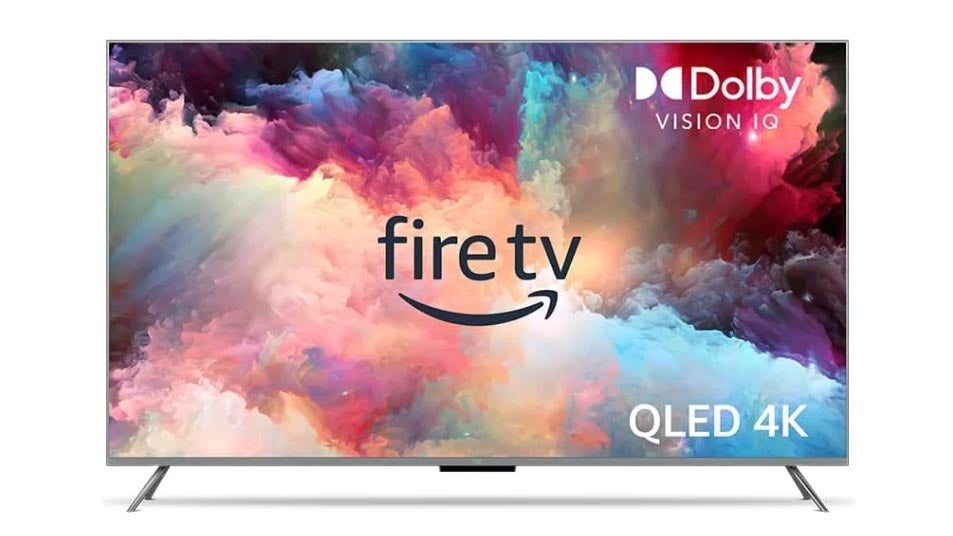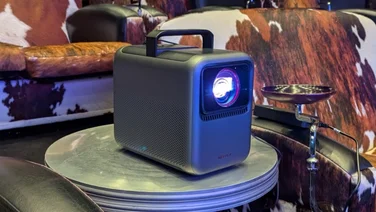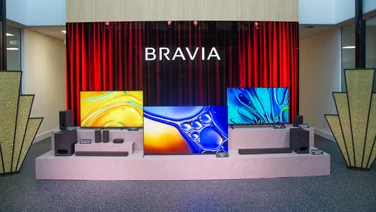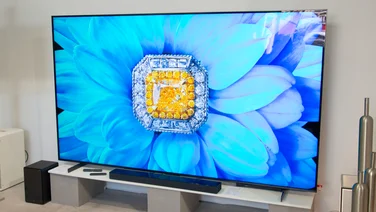To help us provide you with free impartial advice, we may earn a commission if you buy through links on our site. Learn more

While fancy OLEDs and QLEDs will still set you back a pretty penny, the best cheap TVs are constantly improving thanks to technology trickling down from the high-end sets. That means its possible to get a cinematic 4K experience at home without raiding your savings, and potentially still leave room in your budget to afford a good-quality soundbar and a subscription to Netflix.
But with hundreds of similarly named models to choose from, shopping for the best cheap TV can be a daunting, demoralising task. Thats where we come in. Our team of experts have spent countless hours watching and testing TVs, and in this article, weve handpicked the best cheap televisions currently available. That means all you need to do is scroll down the page and pick the model and screen size which best fits your budget and your requirements.
READ NEXT: The best 4K HDR LCD LED, QLED and OLED TVs for every budget
How to choose the best cheap TV for you
What resolution TV should I buy?
The pictures you see on TVs are made up of millions of tiny dots called pixels. To put it simply, the more pixels there are, the higher the resolution and the sharper and more detailed the picture quality will be.
Most TVs fall into one of three categories: Full HD (1,920 x 1,080), 4K/Ultra HD (3,840 x 2,160) and 8K (7,680 x 4,320). Full HD remains an acceptable compromise for smaller screen sizes of around 32 inches and below, but 4K is definitely the sweet spot for cheap TVs. Once the screen size expands beyond 40in, 4K TVs deliver vastly superior picture quality to Full HD alternatives and they arent prohibitively expensive like their 8K brethren.
What about HDR?
Another term youll see a lot is HDR, which stands for High Dynamic Range. We have a separate What is HDR TV? article explaining exactly what this is, but put simply, the best HDR TVs can display brighter, more vibrant images than their non-HDR counterparts.
Cheap TVs typically struggle with HDR content as they simply arent bright enough, so HDR content can look dull and washed out. Some do manage better than others, though, and this partly comes down to which formats they support.
There are several HDR formats out there, such as HDR10, HDR10+, Dolby Vision and Hybrid Log Gamma (HLG), and each has its pros and cons. Formats such as Dolby Vision and HDR10+ are a huge asset for cheaper models as they utilise dynamic metadata to tailor the HDR experience to suit a TVs abilities. You wont experience the eye-popping zing of a top-flight HDR TV, but you can get a taste of what HDR is about.At the time of writing, Dolby Vision is probably the most widely supported format on streaming services and beyond, so its well worth looking out for. Naturally, certain manufacturers often pick one format over another, though: Samsung incorporates the royalty-free HDR10+ into its TVs but steadfastly avoids Dolby Vision, for instance.
What size TV should I buy?
This will be dictated mainly by your budget, the size of your room and how far you plan on sitting from it. Larger TVs cost more but typically deliver a more immersive, cinema-like experience. To find the perfect size for your needs, head on over to our standalone TV size guide.
Before you splash out, make sure you take the time to measure the space you have for a TV and compare it to the manufacturers quoted dimensions.
Is TV panel type important?
Cheap TVs tend to use LCD panels and LED backlighting. Other panel technologies such as Organic LED (OLED), Quantum Dot LED (QLED) and Mini LED are far more expensive and therefore not used on budget models.
There are two main types of LCD LED panels to be aware of, Vertical Alignment (VA) and In-Plane Switching (IPS). VA panels provide dramatically better contrast, but IPS panels provide wider viewing angles. If your sofa is positioned off to one side, then youll get better image quality from a TV that uses IPS technology; if however, youre viewing your TV from directly in front or thereabouts, youll get a bolder image with better contrast on a TV with a VA panel.
Which TVs have the best interface?
As your TV is something you probably use every day, theres more to choosing a good one than just image quality: how easy it is to use is a critical consideration, too. TVs from different manufacturers all have their own interfaces or platforms, so one TV is rarely exactly like another unless, that is, the TV employs a thirdparty platform such as Google TV.
The various platforms can look radically different and also have a big impact on how easy it is to access your TVs various features. Some platforms support a more limited range of streaming services, too, so its worth checking that a TV supports your favourite services before pulling the trigger.
You can read our breakdown of the best smart TV platforms for information on the various options available.
Are cheap TVs good for gaming?
If you want an optimal next-gen gaming experience, a cheap TV wont cut it. The PlayStation 5 and Xbox Series X support 4K resolution gaming at 120Hz something which no cheap TV currently supports. Thats not to say you cant enjoy 60Hz gaming on a cheap TV, though, and the number of games that currently support 4K at 120Hz isnt huge, so its definitely a compromise that most casual gamers can live with.
Some cheap TVs are better equipped for gaming than others. Some support Auto Low Latency Mode, which puts the TV into Game mode when a signal from a console is detected; this helps to minimise input lag. Others support Variable Refresh Rate (VRR), which involves the TV adjusting its refresh rate to match that of the game youre playing to create a smoother, stutter-free and tear-free experience.
If youre interested in seeing what we deem the best gaming TVs regardless of price, head on over to our best TVs for gaming page.
How we test cheap TVs
We test cheap TVs in exactly the same way as we do on high-end OLED or 8K options, which is by using an X-Rite colorimeter in conjunction with Portrait Displays Calman colour calibration software.
This enables us to analyse key aspects of a televisions SDR and HDR performance, including (but not limited to) colour gamut coverage, greyscale and colour accuracy, contrast, panel uniformity and peak brightness. The results of various tests conducted using the Calman software are included in our full-length reviews of the TVs on this page, which are linked below.
Though our TV reviews are primarily data-led and lean heavily on the outcome of these tests, we watch a huge amount of real-world content on the TVs were testing, too. Viewing sessions take place at various times of the day to test the TV out in varying lighting conditions and we try to watch as broad a range of content as possible to see how the set handles it.
We also explore every nook and cranny of a particular TVs operating system to evaluate how intuitive and user-friendly the user experience is, hook it up to a PlayStation 5 or Xbox Series X to gauge its next-generation gaming credentials and stream music from popular platforms such as Spotify to put in-built audio systems to the test.
The best cheap TVs to buy in 2024
1. TCL RC630K: The best cheap TV overall

Price when reviewed: From £299 (43in) | Check price at Currys
The RC630K sits towards the lower end of TCL’s lineup but uses a quantum dot-powered panel rarely found at this kind of price. It has a decent contrast ratio for an LCD television and, in its most accurate Movie mode, delivers pleasingly accurate colours and greyscale. The TV provides a reasonable level of shadow detail and motion is generally handled well by the 60Hz panel, with blurring only creeping in when watching fast-paced sports.
HDR performance is where cheap TVs usually struggle due to a lack of brightness but the RC630K benefits enormously from its use of quantum dots and renders 4K content skillfully, with highlights free from clipping and blacks nicely delineated. Support for HDR10+ and Dolby Vision is a big boon too, with effective tone mapping ensuring content in these HDR formats looks great.
The RC630K provides access to a huge range of streaming platforms thanks to its Roku TV operating system, sound quality is surprisingly good for a cheap TV, while input lag is just 10ms in the RC620K’s Game mode. Next-gen gamers in search of a 4K@120Hz experience will want to check out TCL’s C735K instead, but if it’s just a rock-solid viewing experience for a bargain price you’re after, the RC630K ticks every box.
Read our full TCL RC630K review for more details
Key specs Screen sizes: 43in, 50in, 55in (tested) and 65in; Display type: VA-type LCD LED; Resolution: 4K/UHD (3,840 x 2,160); HDR formats: HDR10, HDR10+, HLG, Dolby Vision; HDMI inputs: 3 x HDMI 2.0; Operating system: Roku OS
2. Samsung CU7100: Best cheap Samsung TV
Price when reviewed: From £289 (43in) | Check price at Amazon

The CU7100 may not have a fancy panel or mind-blowing specs but its the cheapest entry point into Samsungs 4K TV range and a capable performer. Its direct-lit VA LCD panel delivers decent contrast, screen uniformity and shadow detail, while colour and greyscale accuracy are reasonably accurate, especially for a budget TV. Brightness is underwhelming but impressive tone-mapping ensures content is naturally presented and suitably saturated.
Despite its entry-level status, the CU7100 offers the full Tizen OS experience, meaning it has one of the best smart platforms going. App support is wide-ranging and includes all of the key UK catch-up services, while the TV has the processing power to run the easy-to-navigate operating system smoothly.
Read our Samsung CU7100 review
Key specs Screen sizes: 43in, 50in (tested) 55in, 58in, 65in, 70in, 75in and 85in; Display type: VA-type LCD LED; Resolution: 4K/UHD (3,840 x 2,160); HDR formats: HDR10, HLG, HDR10+; HDMI inputs: 3 x HDMI 2.0; Operating system: Tizen OS
3. Amazon Fire TV Omni QLED: The best Fire OS TV
Price when reviewed: From £550 (50in) | Check price at Amazon

LCD TVs with local dimming have historically cost a pretty penny but retail giant Amazon has changed all that with its new flagship 4K model. Its full-array backlight with local dimming and quantum dot filter helps the Omni QLED deliver images with defined shadow detail, rich colours and without any obvious blooming. The panel could be brighter, but tone mapping is excellent, lower-resolution content is upscaled cleanly and fast-paced motion is handled effectively.
That picture quality is backed up by a solid build and a Fire TV operating system thats comprehensive in its provision. Its a little Amazon-centric, which is hardly surprising, but almost all of the key streaming apps are available, along with the full complement of UK TV catch-up services.
The Omni QLEDs refresh rate of 60Hz means its not the best choice for next-gen gaming but that limitation aside, it offers a great deal of bang for your buck. Its worth noting, however, that the 43in model doesnt use full-array local dimming so image quality wont be as good as it is on the larger options.
Read our full Amazon Fire TV Omni QLED review for more details
Key specs Screen sizes: 43in, 50in, 55in and 65in (tested); Display type: VA-type LCD LED; Resolution: 4K/UHD (3,840 x 2,160); HDR formats: HDR10, HDR10+ Adaptive, HLG, Dolby Vision IQ; HDMI inputs: 1 x HDMI 2.1, 3 x HDMI 2.0; Operating system: Fire TV OS








